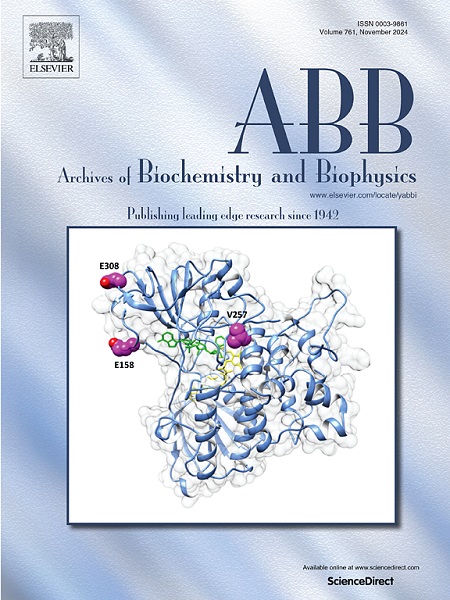c-FLIP/Ku70 complex; A potential molecular target for apoptosis induction in hepatocellular carcinoma
IF 3.8
3区 生物学
Q2 BIOCHEMISTRY & MOLECULAR BIOLOGY
引用次数: 0
Abstract
Hepatocellular carcinoma (HCC) is one of the most lethal malignancies worldwide and the most common form of liver cancer. Despite global efforts toward early diagnosis and effective treatments, HCC is often diagnosed at advanced stages, where conventional therapies frequently lead to resistance and/or high recurrence rates. Therefore, novel biomarkers and promising medications are urgently required. Epi-drugs, or epigenetic-based medicines, have recently emerged as a promising therapeutic modality. Since the epigenome of the cancer cells is always dysregulated and this is followed by apoptosis-resistance, reprogramming the epigenome of cancer cells by epi-drugs (such as HDAC inhibitors (HDACis), and DNMT inhibitors (DNMTis)) could be an alternative approach to use in concert with established treatment protocols. C-FLIP, an anti-apoptotic protein, and Ku70, a member of the DNA repair system, bind together and make a cytoplasmic complex in certain cancers and induce resistance to apoptosis. Many epi-drugs, such as HDACis, can dissociate this complex through Ku70 acetylation and activate cellular apoptosis. The novel compounds for dissociating this complex could provide an innovative insight into molecular targeted HCC treatments. In this review, we address the innovative therapeutic potential of targeting c-FLIP/Ku70 complex by epi-drugs, particularly HDACis, to overcome apoptosis resistance of HCC cells. This review will cover the mechanisms by which the c-FLIP/Ku70 complex facilitates cancer cell survival, the impact of epigenetic alterations on the complex dissociation, and highlight HDACis potential in combination therapies, biomarker developments and mechanistic overviews. This review highlights c-FLIP ubiquitination and Ku70 acetylation levels as diagnostic and prognostic tools in HCC management.

c-FLIP / Ku70复杂;肝细胞癌诱导细胞凋亡的潜在分子靶点。
肝细胞癌(HCC)是全球最致命的恶性肿瘤之一,也是最常见的肝癌形式。尽管全球致力于早期诊断和有效治疗,但HCC通常在晚期才被诊断出来,而常规治疗往往导致耐药和/或高复发率。因此,迫切需要新的生物标志物和有前景的药物。外显药物,或基于表观遗传学的药物,最近成为一种有前途的治疗方式。由于癌细胞的表观基因组总是失调,随之而来的是凋亡抵抗,因此通过表观药物(如HDAC抑制剂(HDACis)和DNMT抑制剂(DNMTis))对癌细胞的表观基因组进行重编程可能是与既定治疗方案相一致的另一种方法。抗凋亡蛋白C-FLIP和DNA修复系统成员Ku70结合在一起,在某些癌症中形成细胞质复合体,诱导细胞凋亡抵抗。许多外显药物,如HDACis,可以通过Ku70乙酰化解离该复合物并激活细胞凋亡。解离该复合物的新化合物可能为分子靶向HCC治疗提供创新的见解。在这篇综述中,我们讨论了用外显药物,特别是HDACis靶向c-FLIP/Ku70复合物,克服HCC细胞凋亡抵抗的创新治疗潜力。本文将涵盖c-FLIP/Ku70复合体促进癌细胞存活的机制,表观遗传改变对复合体解离的影响,并强调HDACis在联合治疗、生物标志物开发和机制概述方面的潜力。本综述强调c-FLIP泛素化和Ku70乙酰化水平是HCC治疗的诊断和预后工具。
本文章由计算机程序翻译,如有差异,请以英文原文为准。
求助全文
约1分钟内获得全文
求助全文
来源期刊

Archives of biochemistry and biophysics
生物-生化与分子生物学
CiteScore
7.40
自引率
0.00%
发文量
245
审稿时长
26 days
期刊介绍:
Archives of Biochemistry and Biophysics publishes quality original articles and reviews in the developing areas of biochemistry and biophysics.
Research Areas Include:
• Enzyme and protein structure, function, regulation. Folding, turnover, and post-translational processing
• Biological oxidations, free radical reactions, redox signaling, oxygenases, P450 reactions
• Signal transduction, receptors, membrane transport, intracellular signals. Cellular and integrated metabolism.
 求助内容:
求助内容: 应助结果提醒方式:
应助结果提醒方式:


